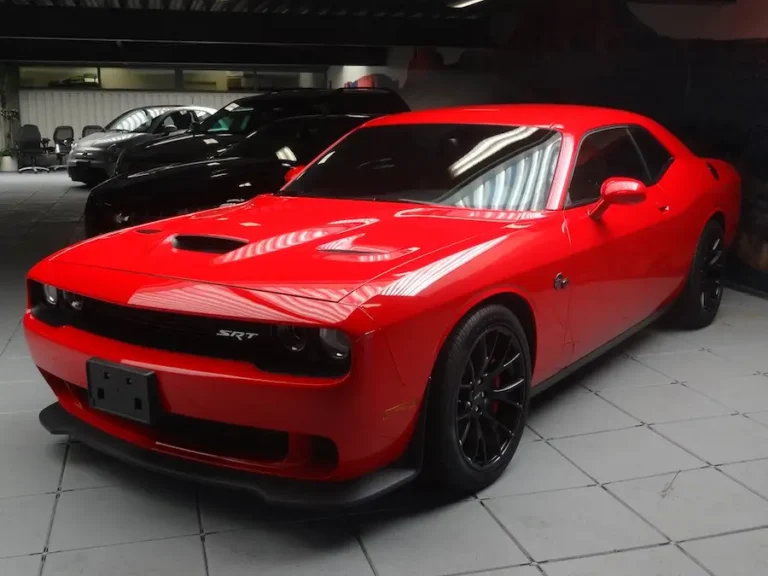BMW S85 Engine: Power and Precision

Key Takeaways
- Significance: The BMW S85 engine is revered for its high-revving performance and engineering excellence. It is a cornerstone of BMW’s M Division legacy, showcasing precision and power.
- Performance: With a 5.0-liter V10 engine producing over 500 horsepower, the S85 delivers remarkable speed and driving thrills in the BMW E60 M5 and E63/E64 M6 models.
- Engineering Excellence: Featuring advanced technologies like individual throttle bodies, double VANOS, and a high compression ratio, the S85 draws inspiration from BMW’s Formula 1 heritage.
- Legacy: The S85 is a benchmark for naturally aspirated engines, and its influence continues to shape the automotive world today.
Introduction to the BMW S85 Engine
In a world where turbocharged and hybrid engines dominate, the BMW S85 stands as a rare gem—a naturally aspirated V10 engine that blends power, precision, and driving excitement. Launched in the mid-2000s, the S85 quickly became synonymous with BMW’s commitment to creating high-performance engines. It’s a reminder of an era when pure driving pleasure was at the forefront of automotive design.
History and Development of the S85 Engine
The S85 engine was designed to offer motorsport-level performance while remaining suitable for daily driving. Inspired by BMW’s Formula 1 technology, the engine embodies the brand’s pursuit of excellence in both the streets and on the track.
- Origins: Developed in the early 2000s, the S85 benefited from BMW’s Formula 1 knowledge, aiming to bring the precision and performance of racing engines to production cars.
- Debut: Introduced in the 2005 BMW E60 M5, the S85 later powered the E63/E64 M6, pushing the boundaries of automotive engineering.
- Engineering Goal: To build a high-revving, reliable engine capable of handling daily driving demands while delivering track-worthy performance.
Technical Specifications
The S85 engine is a feat of engineering, with every detail optimized for performance and reliability. Here’s a quick look at its technical specs:
| Specification | Details |
|---|---|
| Engine Type | Naturally aspirated V10 |
| Displacement | 5.0 liters (4,999 cc) |
| Bore x Stroke | 92 mm x 75.2 mm |
| Compression Ratio | 12.0:1 |
| Valvetrain | DOHC, 4 valves per cylinder |
| Redline | 8,250 RPM |
Performance Metrics
Driving a car equipped with the S85 engine is an unforgettable experience. Here’s a look at its key performance figures:
- Horsepower: 500 hp at 7,750 RPM
- Torque: 384 lb-ft at 6,100 RPM
- 0-60 mph: Achieved in just 4.1 seconds in the E60 M5
- Top Speed: Electronically limited to 155 mph, but capable of higher speeds without restrictions
- Redline Thrill: The engine truly comes alive as it reaches its redline at 8,250 RPM, delivering an exhilarating experience.
Advanced Engineering Features
The S85 engine is equipped with cutting-edge technologies that contribute to its thrilling performance:
- Variable Valve Timing (VANOS): BMW’s double VANOS adjusts the camshaft timing to optimize performance across all RPM ranges, improving both low-end torque and high-end power for a smoother drive.
- Individual Throttle Bodies: Each cylinder has its own throttle body, which allows for precise air intake control, making the engine feel incredibly responsive and alive.
- High-Revving Design: Lightweight components like forged pistons and a specially designed valvetrain enable the engine to rev up to 8,250 RPM, ensuring a spine-tingling driving experience.
Materials and Manufacturing
BMW’s use of advanced materials and manufacturing techniques ensures the S85 engine is both lightweight and durable.
- Engine Block: Crafted from an aluminum-silicon alloy, the engine block reduces weight without sacrificing strength.
- Precision Manufacturing: CNC machining is used to ensure the engine can withstand high stresses while maintaining reliable performance at high RPMs.
Applications in BMW Models
The S85 engine powered two of BMW’s most iconic M models: the E60 M5 and the E63/E64 M6.
- BMW E60 M5: With a 0-60 mph time of just 4.1 seconds and a top speed of 155 mph (electronically limited), the E60 M5 offers a blend of thrilling performance and daily usability. The 7-speed SMG transmission allows for quick gear shifts, amplifying the driving experience.
- BMW E63/E64 M6: The M6 offers the same exhilarating power as the M5 but with a more luxurious touch. Available as both a coupe and convertible, the M6 delivers a refined yet thrilling ride.
Comparison with Other BMW Engines
The S85 is often compared to other legendary BMW engines, and here’s how it stacks up:
- S85 vs. S65: The S65, found in the E92 M3, is a V8 engine that balances power and efficiency. While the S65 offers more torque at lower RPMs, the S85’s V10 layout focuses on high-revving thrills and more horsepower, setting it apart as a true performance engine.
- S85 vs. S62: The S62, used in the E39 M5, marked a shift towards V8 engines in BMW’s M lineup. However, the S85’s V10 design pushed the envelope further, offering higher RPMs and more horsepower.
Maintenance and Reliability
Though the S85 is a high-performance masterpiece, it requires diligent care to maintain its reliability:
- Common Issues: Two known issues include rod bearing wear and throttle actuator failures, both of which can affect performance if left unchecked.
- Maintenance Tips: Regular oil changes and periodic inspections can help avoid costly repairs and keep the engine running smoothly.
- Costs: While maintenance can be expensive, for enthusiasts, the S85 is worth the investment due to the unparalleled driving experience it offers.
Tuning and Aftermarket Potential
The S85 engine has a wealth of tuning potential, allowing enthusiasts to enhance its performance further.
- Popular Modifications: Common upgrades include performance chips, high-flow exhaust systems, and cold air intakes. These modifications improve the engine’s efficiency and responsiveness.
- Cautions: While performance tuning can enhance power, extreme modifications may compromise the engine’s long-term reliability, so it’s important to strike a balance between performance and durability.
Case Studies
- BMW E60 M5: Many owners rave about the S85’s high-revving nature and track-worthy performance. However, they also emphasize the importance of routine maintenance to avoid issues like rod bearing wear.
- BMW E63 M6: The M6 delivers a refined driving experience, with the S85 engine providing both power and smoothness, making it a well-rounded performance car.
Legacy and Impact on BMW’s Reputation
The S85 is more than just an engine; it’s a symbol of BMW’s engineering prowess.
- Motorsport Roots: The design of the S85 was influenced by BMW’s Formula 1 success, reflecting the brand’s commitment to motorsport-inspired performance.
- Enduring Influence: Even as BMW embraces turbocharging in its newer models, the S85 remains a benchmark for naturally aspirated performance.
- Cultural Significance: The S85 is one of the last great naturally aspirated engines, embodying the spirit of pure driving pleasure that many enthusiasts still crave today.
Conclusion
The BMW S85 engine stands as a true masterpiece, offering unmatched performance and excitement. Whether in the E60 M5 or E63/E64 M6, it provides an extraordinary driving experience that enthusiasts continue to cherish. Though it demands regular maintenance, the rewards of owning an S85-powered BMW are undeniable. The S85 will remain a cornerstone in BMW’s legacy of engineering excellence and driving thrill.
Frequently Asked Questions (FAQs)
What models use the S85 engine?
The S85 engine is found in the BMW E60 M5 and the E63/E64 M6, both of which showcase its performance and precision engineering.
What makes the S85 engine special?
The S85 is a naturally aspirated V10 engine inspired by Formula 1 technology, offering exceptional high-revving performance and advanced features like individual throttle bodies.
Is the S85 engine reliable?
With proper maintenance, the S85 can be reliable. Common issues include rod bearing wear and throttle actuator failures, but these can be mitigated with regular inspections.
Can you modify the S85 for more performance?
Yes, popular modifications include performance chips, upgraded exhausts, and air intakes. Moderate tuning can boost performance without compromising the engine’s reliability.
How does the S85 compare to modern engines?
Modern BMW engines are turbocharged, providing more torque at lower RPMs. The S85, however, is focused on delivering high-revving thrills and top-end power, making it unique in its performance approach.
Thanks for checking out this article on EngineEcho.com! Hope you found this article: "BMW S85 Engine: Power and Precision" helpful! If you liked it and want to dive into more car engine topics, head over to our homepage. There's always something new to discover in the world of engines. Enjoy your reading journey!
Check out our previous article: Understanding the Service Engine Soon Light






